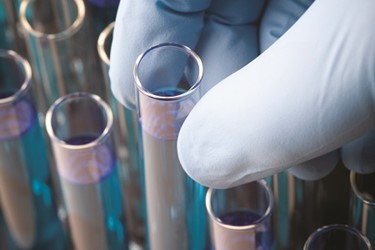Purification Of Recombinant F(Ab')2 Fragments And Their Various Applications

By Deborah Grainger
First published November 8, 2016 on www.Biocompare.com
Fragment antigen binding domains, or F(ab) fragments, are derived from the upper branches of the ‘Y’-shaped antibody molecule. They form the antigen binding interfaces of intact antibodies, known as the paratope, and retain their inherent target binding capacities even when isolated from the rest of the protein (the Fragment crystallizable or Fc fragment). Separation can be achieved enzymatically using an either papain or pepsin. Cleavage with papain yields two individual F(ab) fragments consisting of a single light chain and half of a heavy chain (comprising a VH and CH1 region), whereas cleavage with pepsin produces F(ab’)2 — two individual F(ab) fragments joined together by a disulfide bond. Additionally, modern molecular biology techniques have enabled the genetic engineering and production of F(ab) fragments in host cell systems, allowing them to be expressed independently of the Fc region without the need for enzymatic cleavage and permitting an array of different conformations.
Get unlimited access to:
Enter your credentials below to log in. Not yet a member of Bioprocess Online? Subscribe today.
